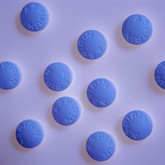Generics/Research
Pharmaceutical pricing and reimbursement policies
A recurrent challenge in health policy is to ensure equitable access to safe and effective medicines. In recent years, access to medicines, in particular to high-cost medicines, has become a major challenge for payers in all countries including high-income economies. Factors that challenge the financial sustainability of publicly funded health and pharmaceutical systems include demographic and epidemiological developments, a tightening of public health budgets due to overall economic pressures, e.g. the global financial crisis, and the need of public payers to consider covering new medicines, some of which come with premium prices [1].
Prescribing and dispensing generics in Japan
Drug costs in Japan have been found to be much greater than the average of industrialized nations, which means that too many wasteful prescriptions are written for pharmaceuticals. This has been attributed to attempts by medical institutions to increase revenues by prescribing unnecessary medicines to patients. To curb this trend, the government has pushed forward with the lowering of government-set prices for prescription drugs and the separation of medical and dispensary services in its national health programme, which was implemented in 1974.
Policies to lower prices of generics in Austria and Finland
In this era of austerity many governments have introduced policies aimed at reducing the price of generics. In Austria, measures taken to reduce the cost of medicines include generic price linkage. While in Finland generics substitution and reference pricing have been introduced.
Safety monitoring of drug interchangeability
When a brand-name drug is going off patent protection, pharmaceutical or generics companies may file an abbreviated new drug application (ANDA) for approval of a generic drug. As indicated by the US Food and Drug Administration (FDA), two drug products are claimed to be bioequivalent (BE) if the 90% confidence interval (CI) for the geometric mean ratio is totally within the bioequivalent limits of (80%, 125%) based on log-transformed data [1, 2] and an approved generic drug can be used as a substitute for the brand-name drug. FDA, however, does not indicate that approved generics of the same brand-name drug can be used interchangeably. Assume a patient switches the generic drug from BE 125% to BE 80% or from BE 80% to BE 125%, the change of the drug concentration in blood are both dramatic. As more generics become available in the marketplace, it is a concern whether the approved generics are safe and can be used interchangeably.
FDA evaluation of residual solvents in generics
Differences between generics and their reference product in terms of inactive ingredients, e.g. residual solvents, are allowed if applicants provide information demonstrating that these differences do not affect the safety or efficacy of the proposed drug product. Authors from the Office of Generic Drugs at the US Food and Drug Administration (FDA) highlight general toxicology concerns caused by formulation differences between generic and originator drugs [1].
Prescribing generics for chronic musculoskeletal pain
The use of generics has become an issue of concern, both in public health and economical terms. Nevertheless, parallel to an ever-stronger advocacy for their use, various sources of information have reported patients’ concerns regarding substitution. Using a qualitative interview study, researchers from Geneva University Hospitals and the University of Geneva investigated the personal definitions and understanding of generics in patients suffering from non-specific chronic musculoskeletal pain, to elucidate the reasons that might explain why patients are confident or reluctant to take generics [1].
FDA evaluation of impurities in generics
Although generics may differ from their reference product in terms of inactive ingredients, which includes impurities, such compounds in generics, especially genotoxic impurities, are an area of increasing concern for the pharmaceutical and regulatory world. Authors from the Office of Generic Drugs at the US Food and Drug Administration (FDA) highlight general toxicology concerns caused by such formulation differences between generic and originator drugs [1].
FDA evaluation of excipients in generics
Generics may differ from their reference product in terms of inactive ingredients, e.g. excipients, provided this does not affect the safety and efficacy of the product. Authors from the Office of Generic Drugs at the US Food and Drug Administration (FDA) highlight general toxicology concerns caused by such formulation differences between generic and originator drugs [1].
Effectiveness and cost-effectiveness of osteoporosis drugs
Comparison of treatments for osteoporosis has shown that pharmacological intervention for prevention of secondary fractures is cost-effective [1].
Impact of antiretroviral generics on the Italian National Health Service
The cost of antiretroviral therapies (ART) for the treatment of human immunodeficiency virus (HIV), which is now considered a chronic disease [1], represents an increasing burden for healthcare services worldwide. In particular, the availability on the market of new antiretroviral drugs, often more effective and more expensive than those available, lead to the need to identify cost containing strategies to ensure the economic sustainability of the healthcare service and to provide effective treatments to patients. Over the next few years, several patents for antiretroviral drugs will expire, giving the possibility for generics to enter the market. The availability of new generics on the market, may lead to a lowering of ART costs, and therefore to the affordability to provide the aforementioned new and innovative drugs.











